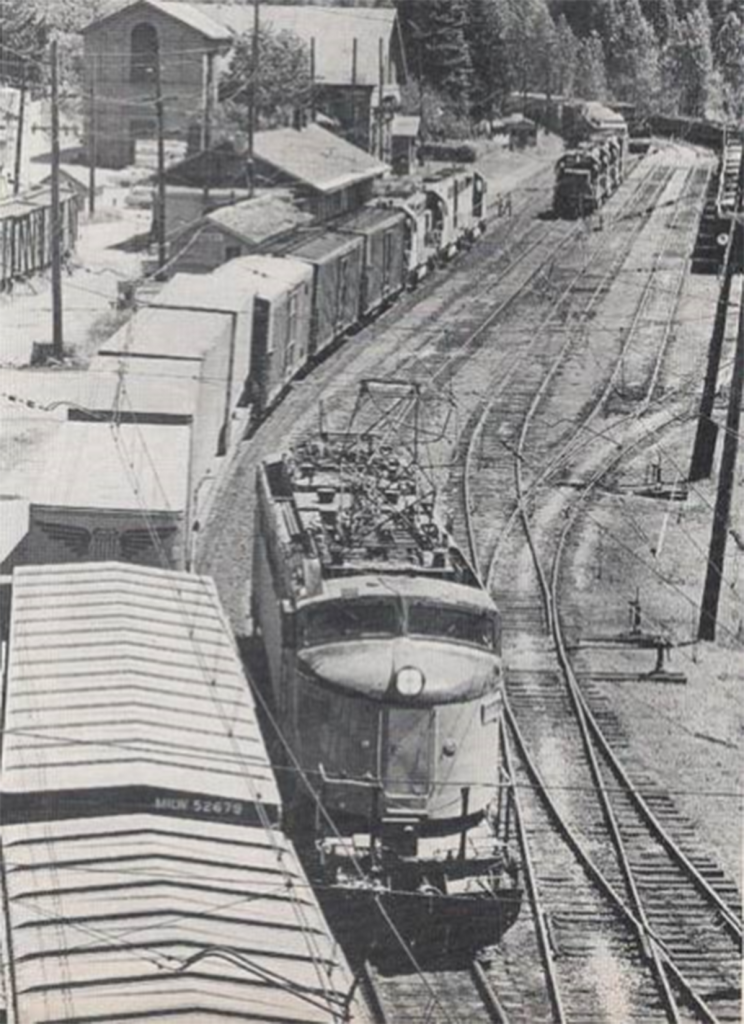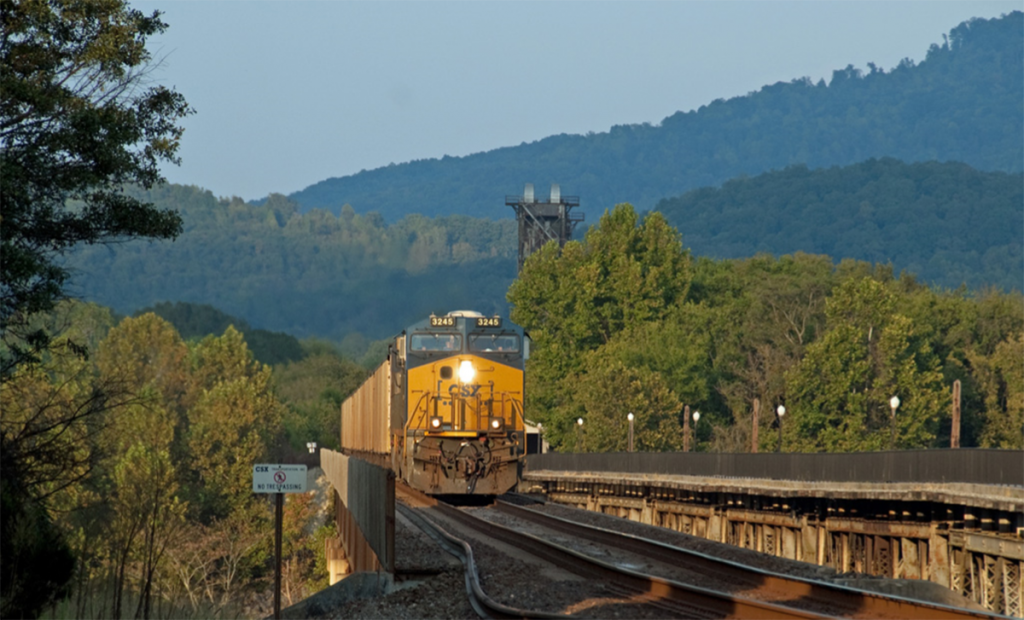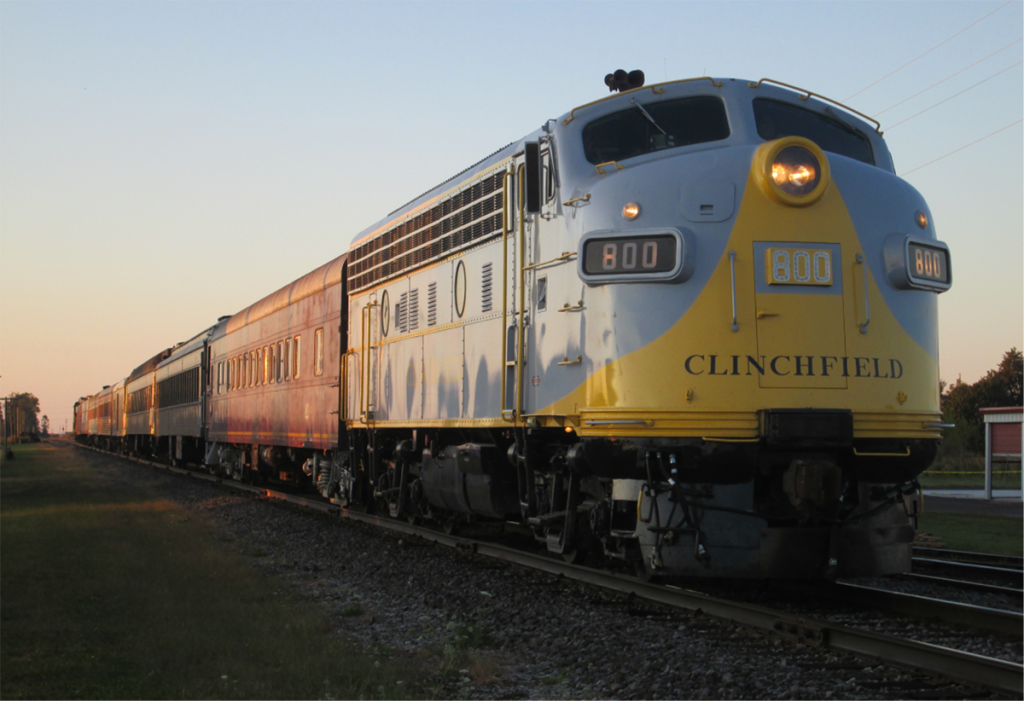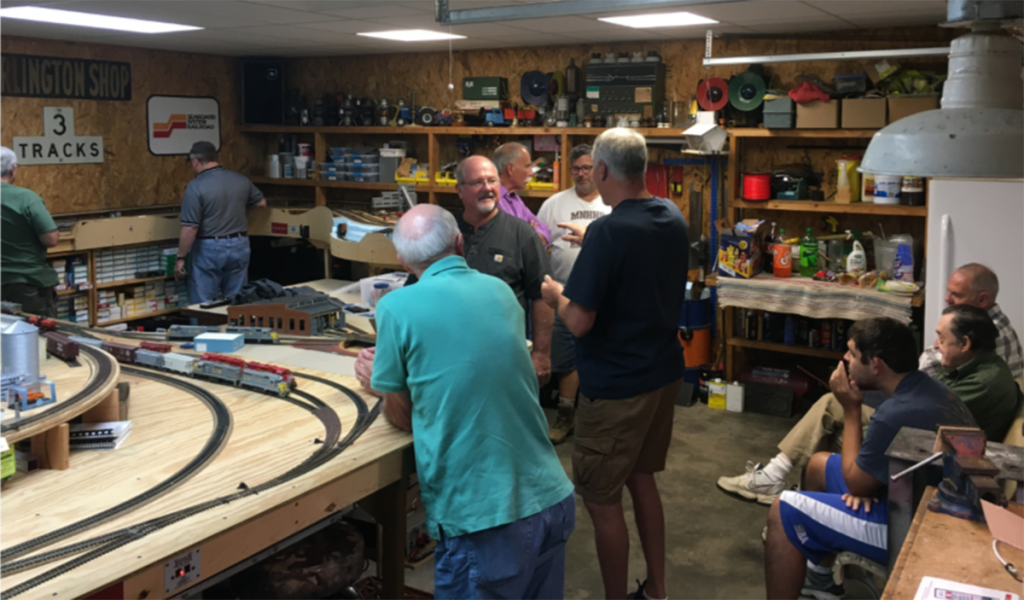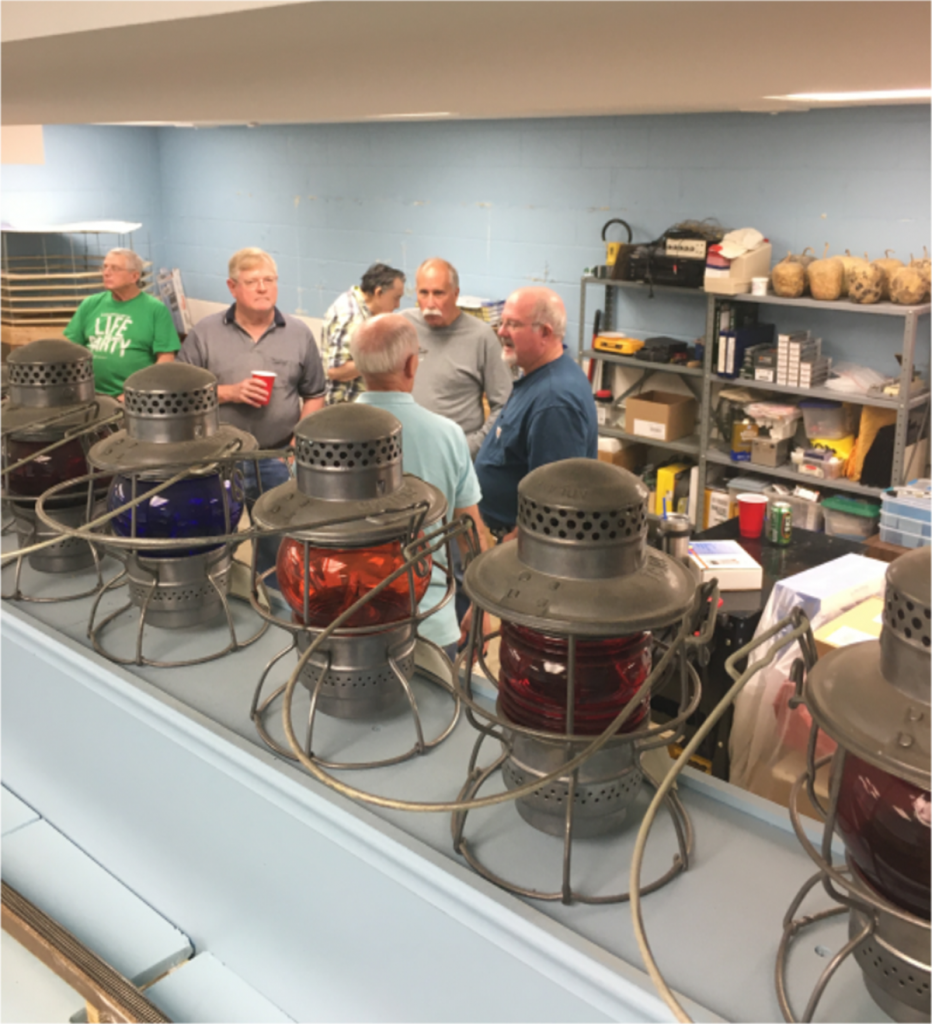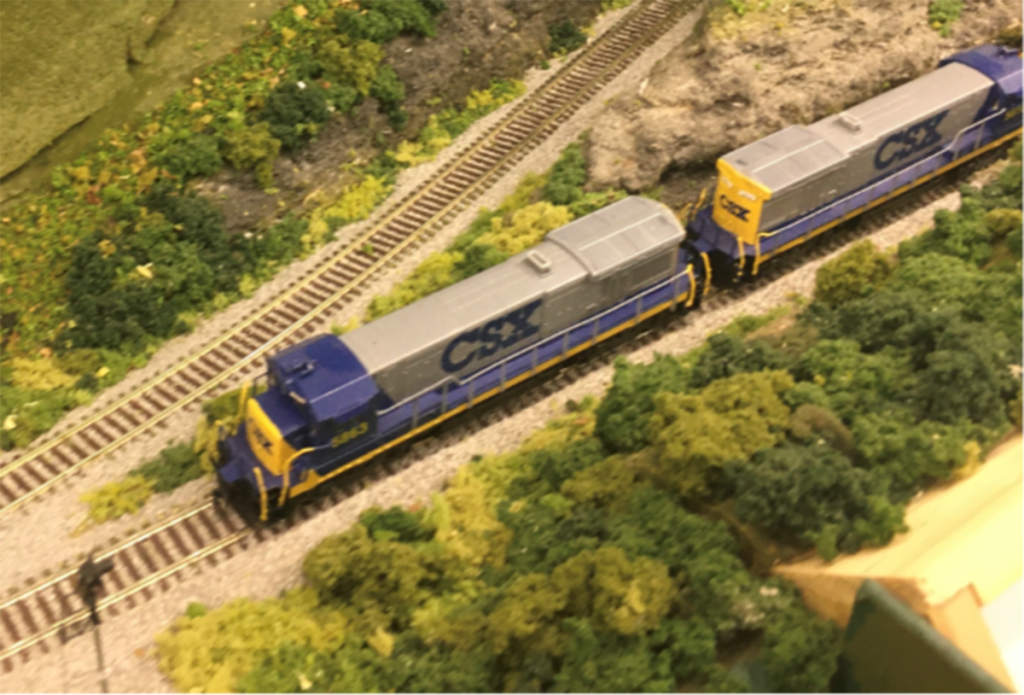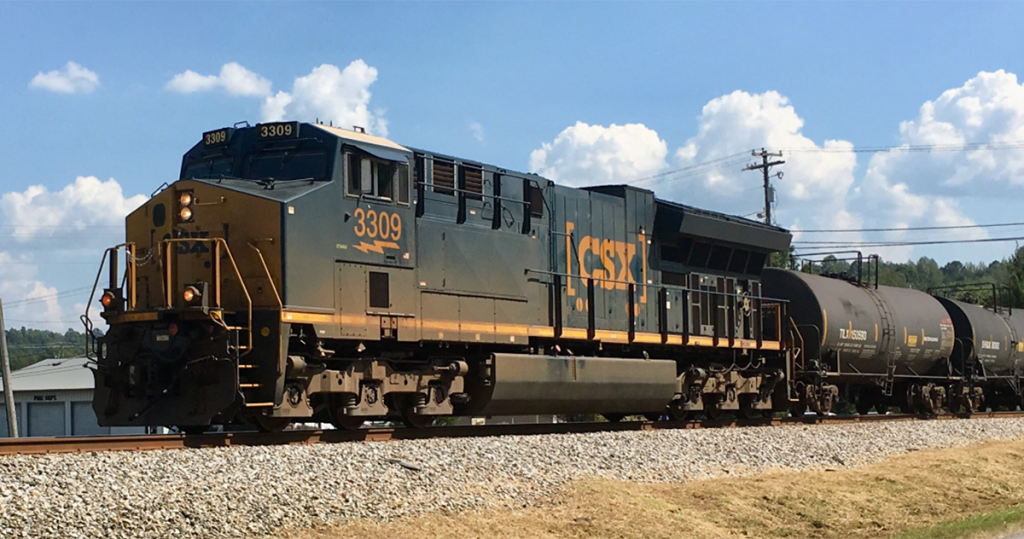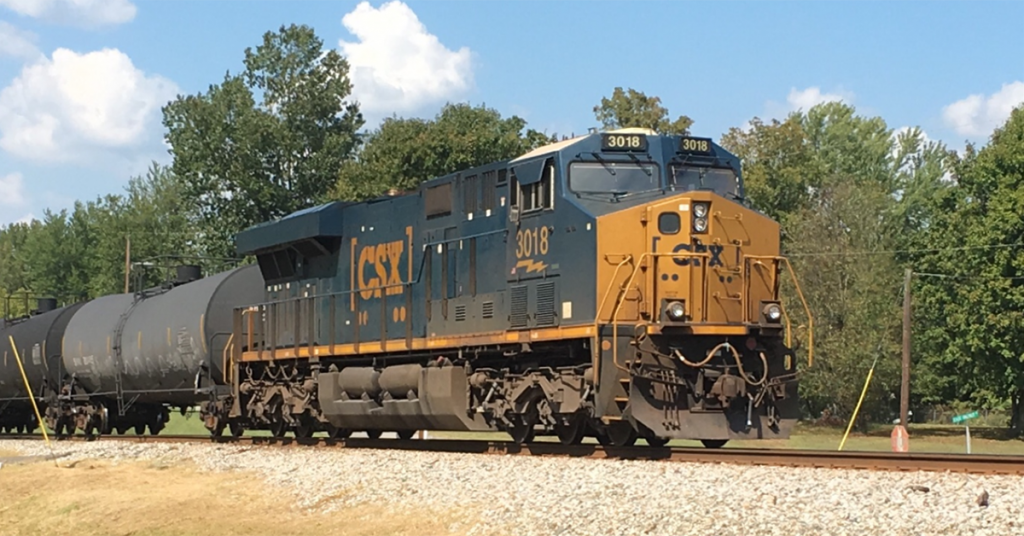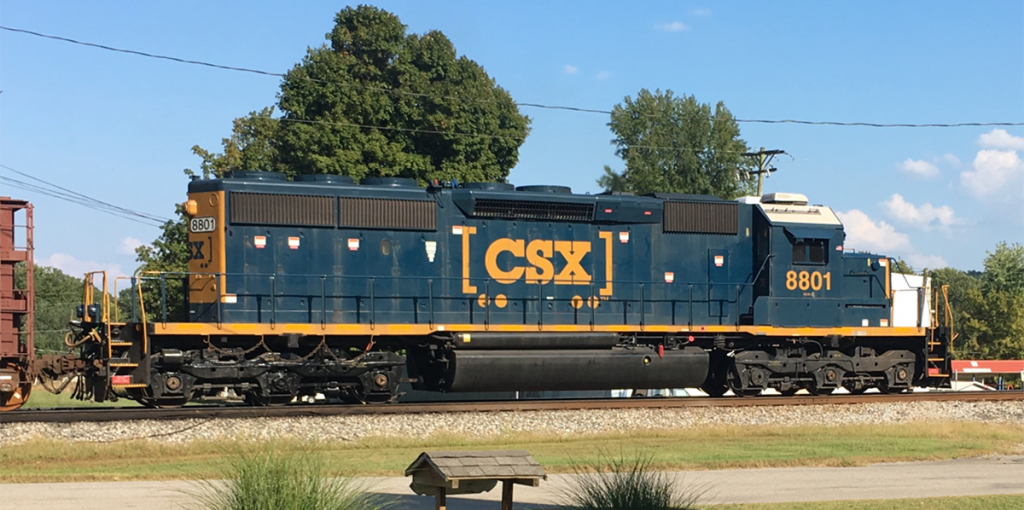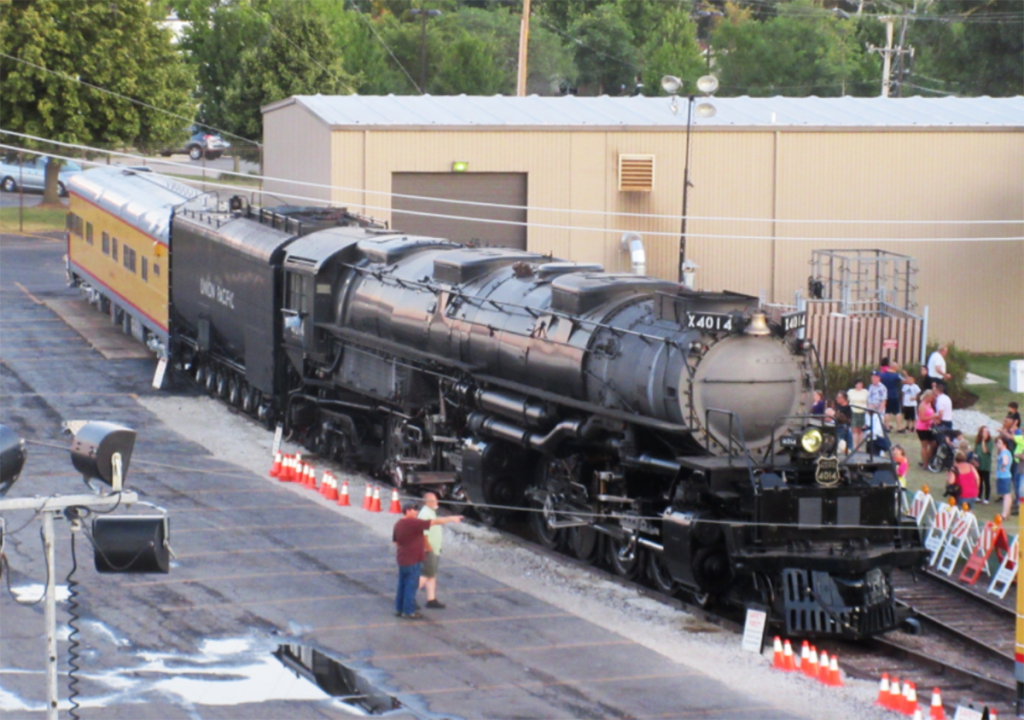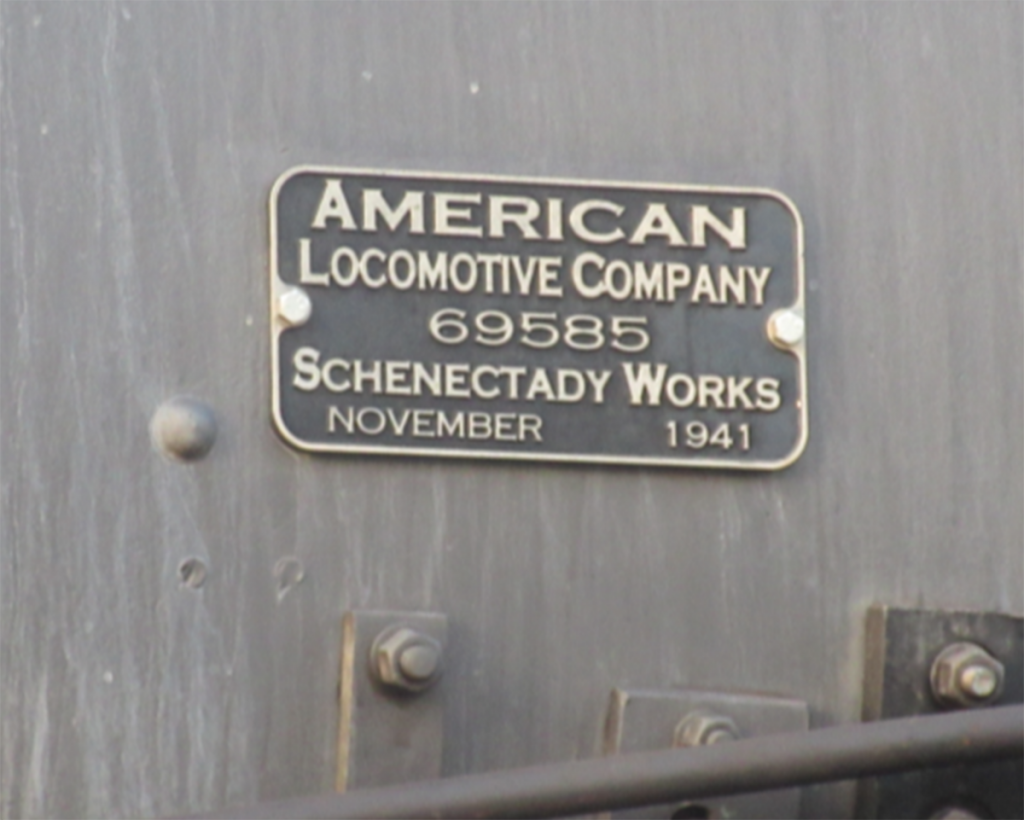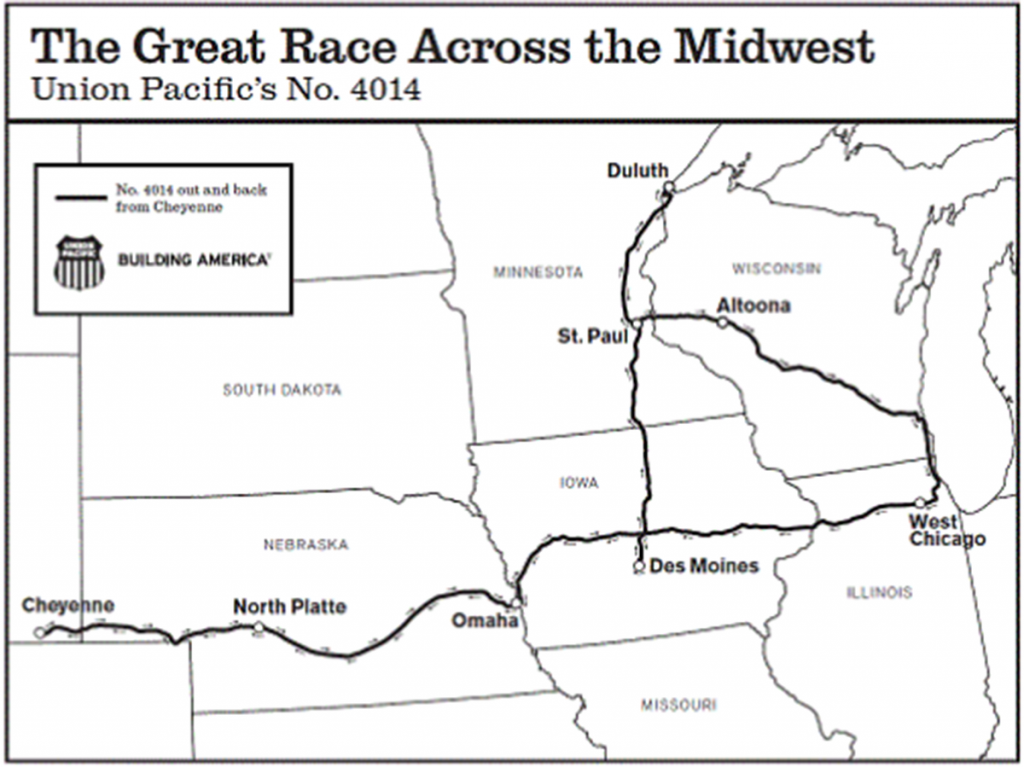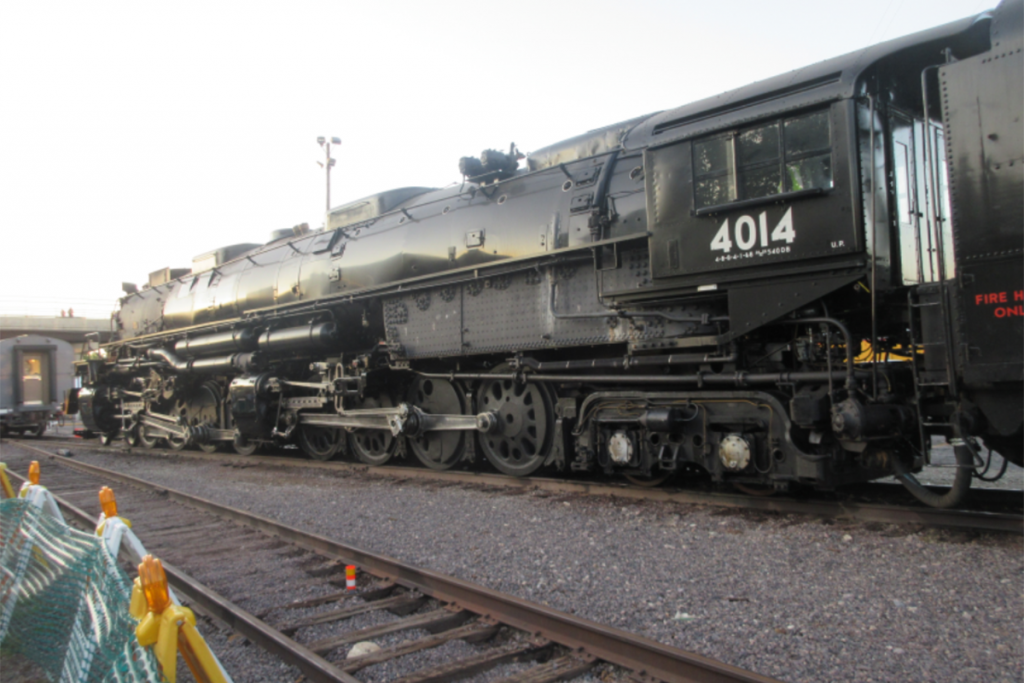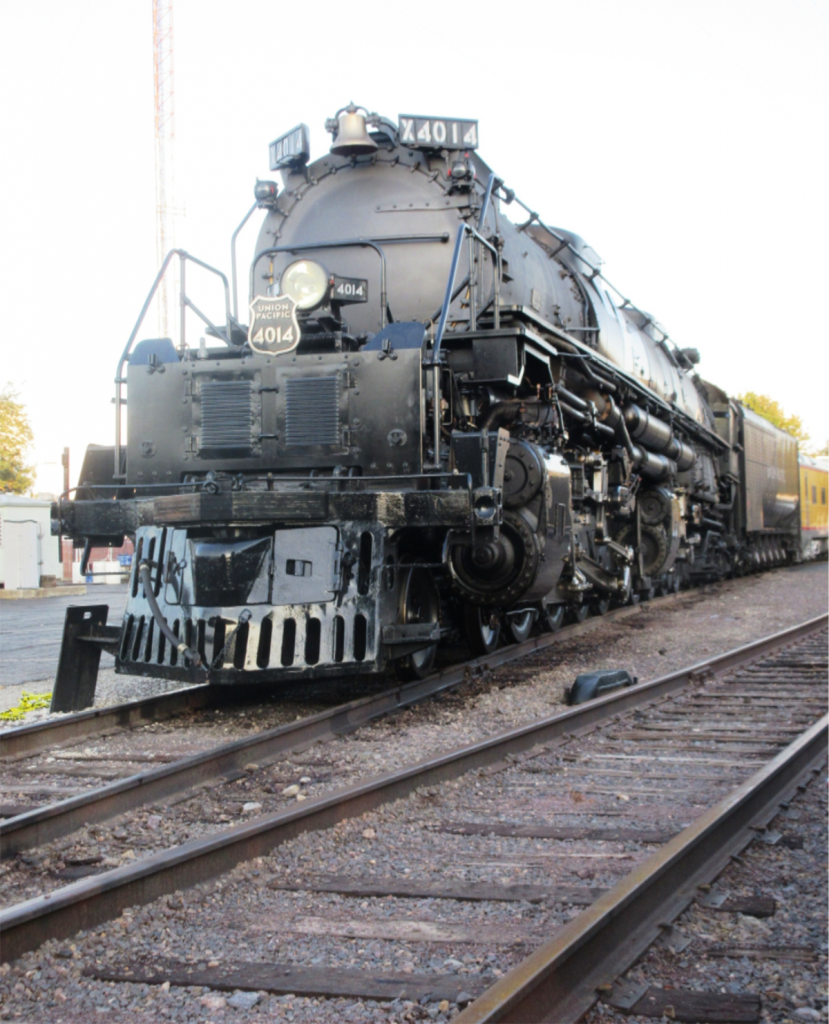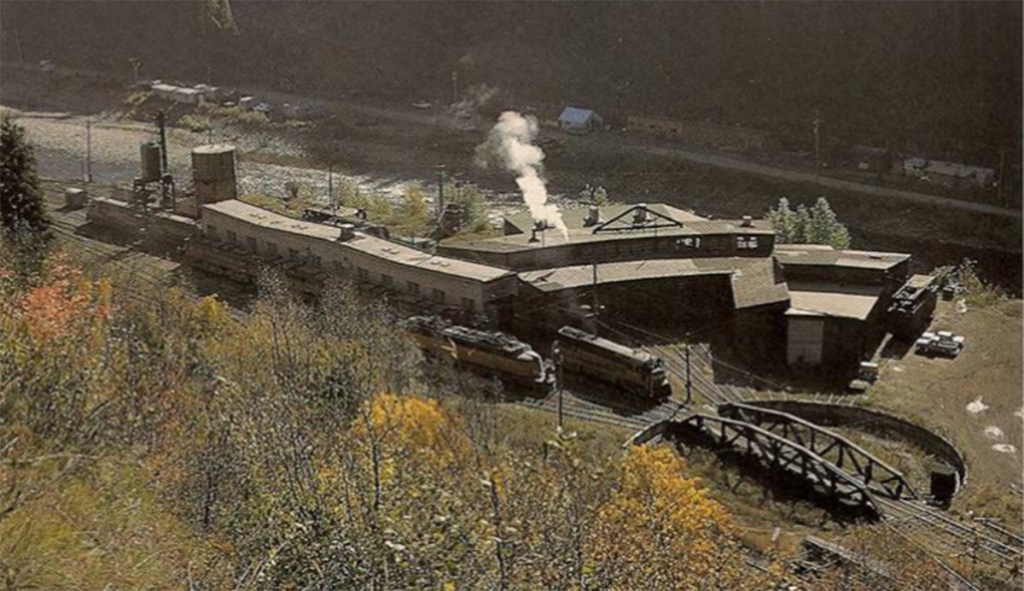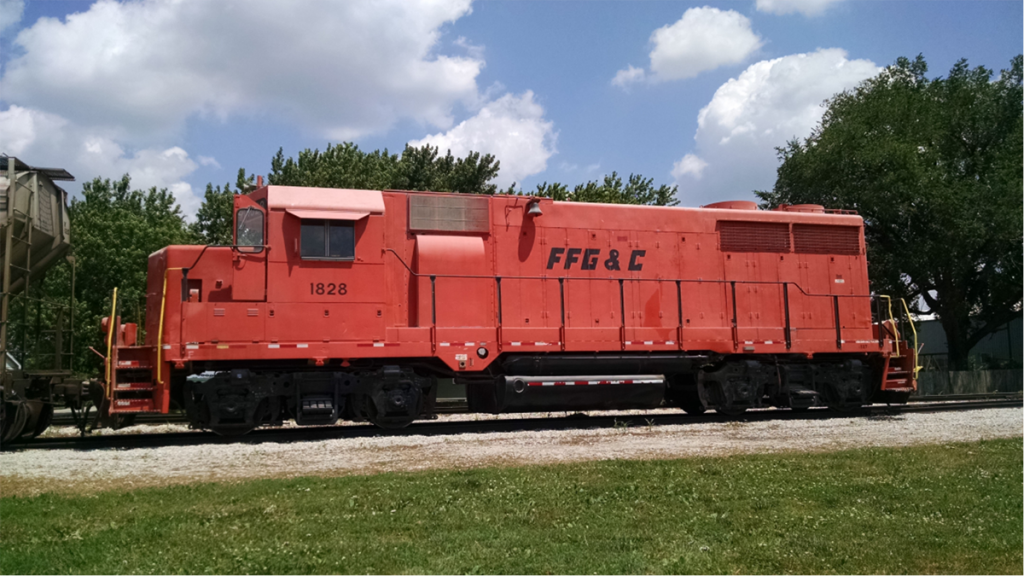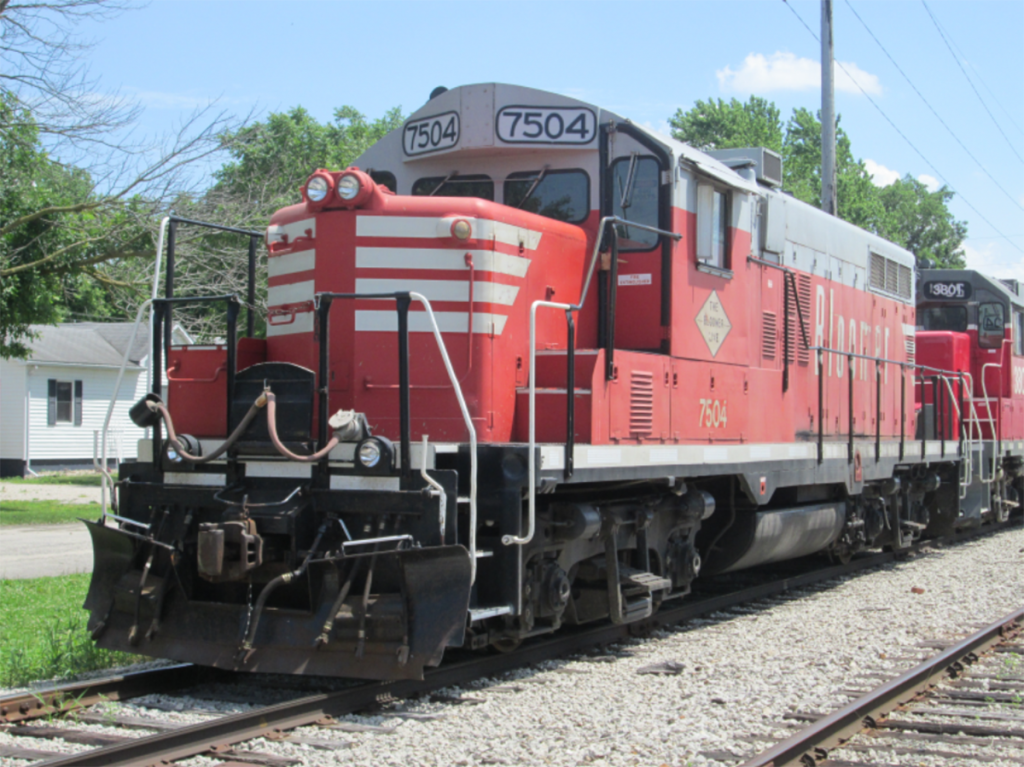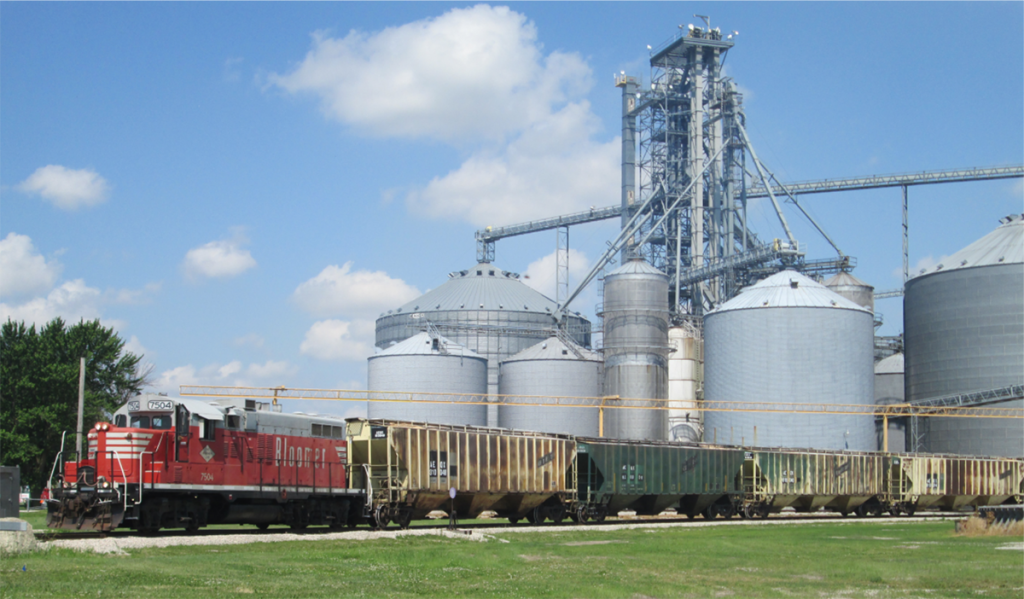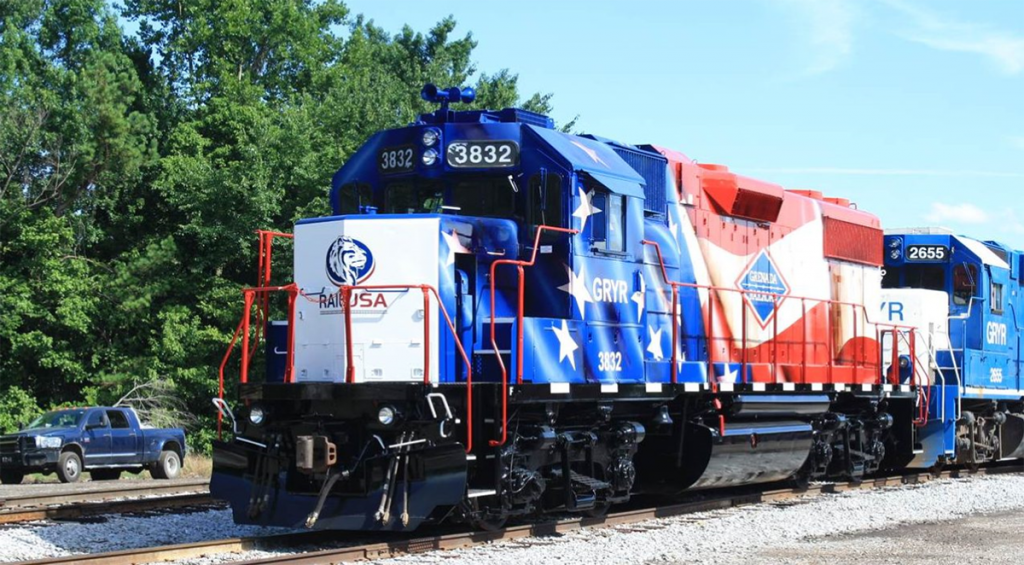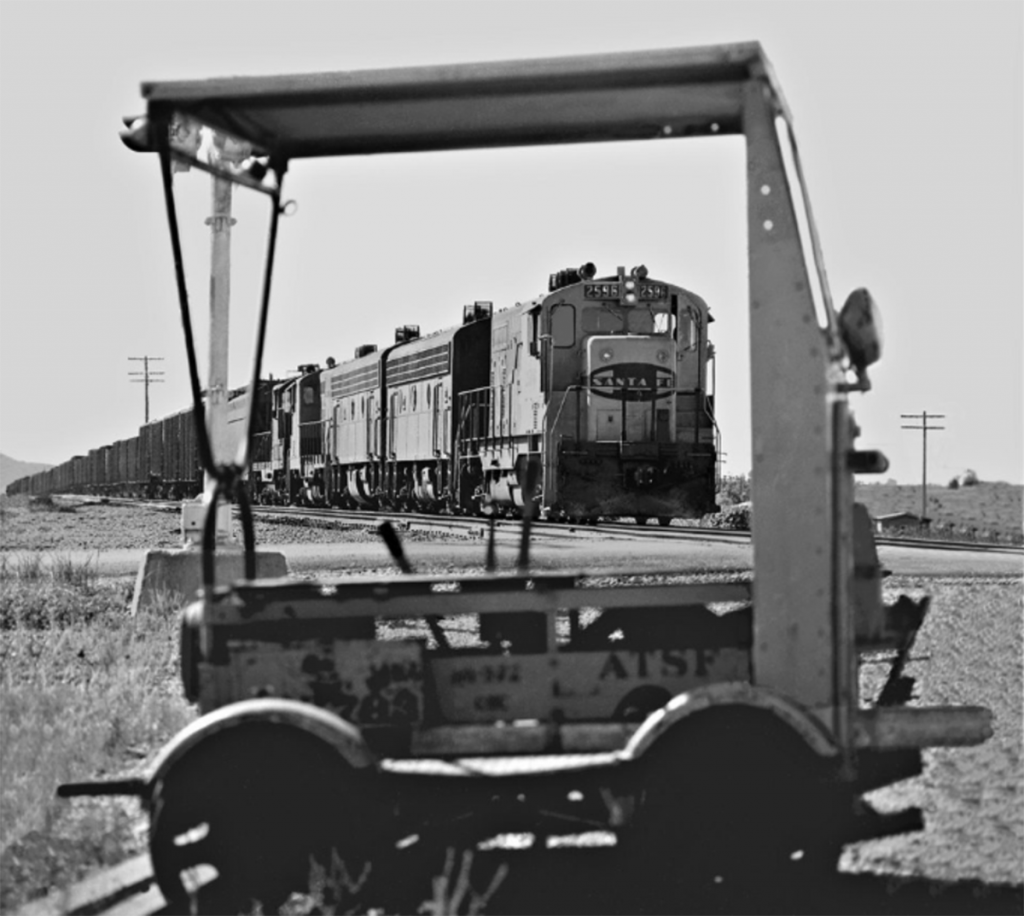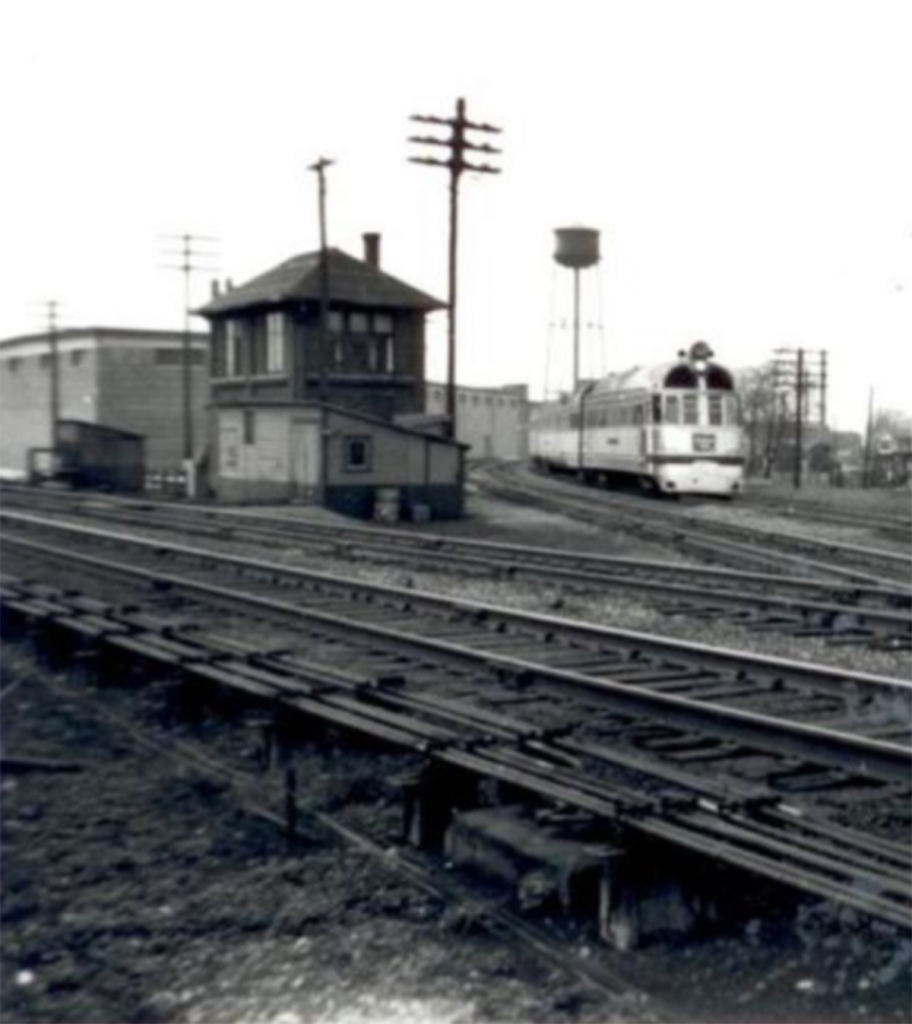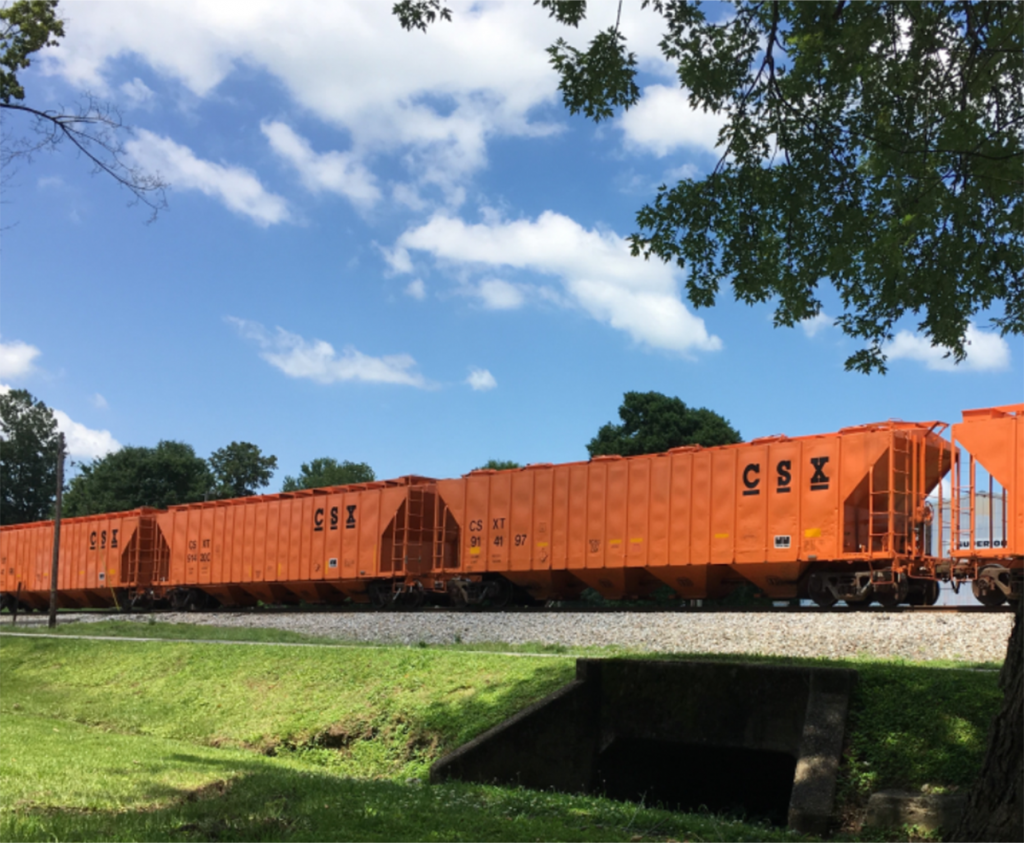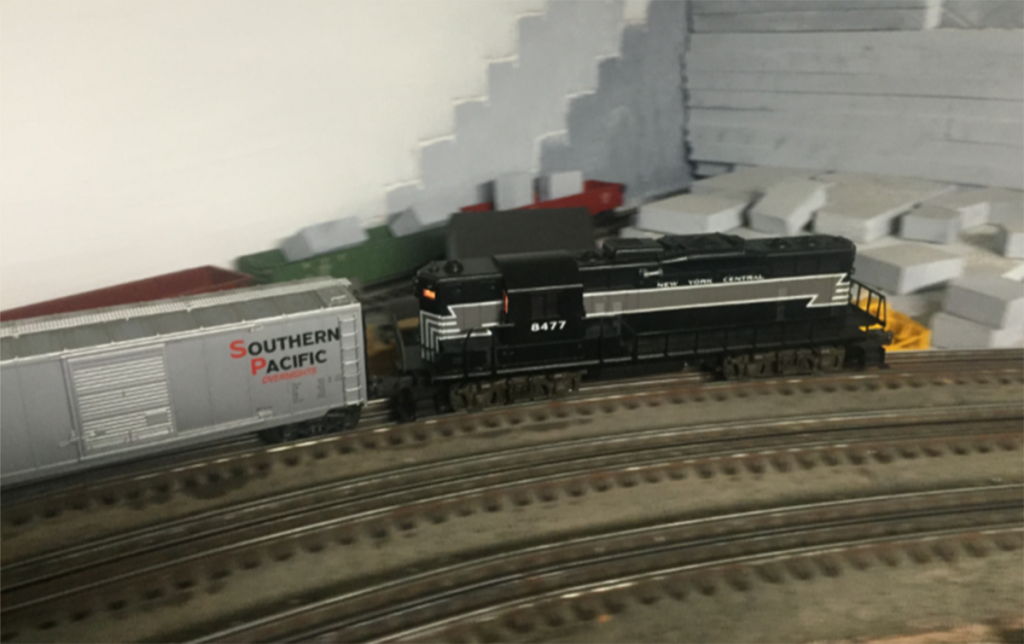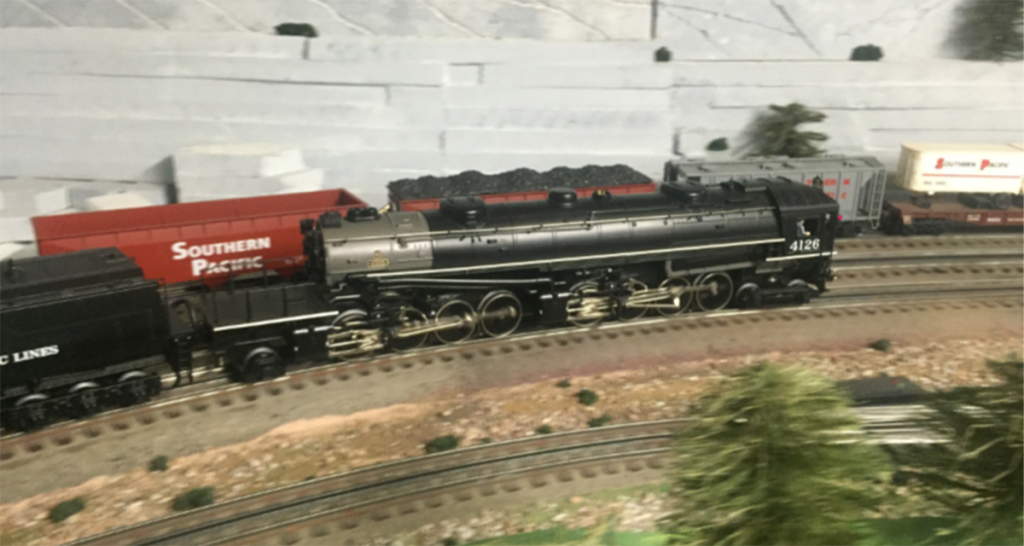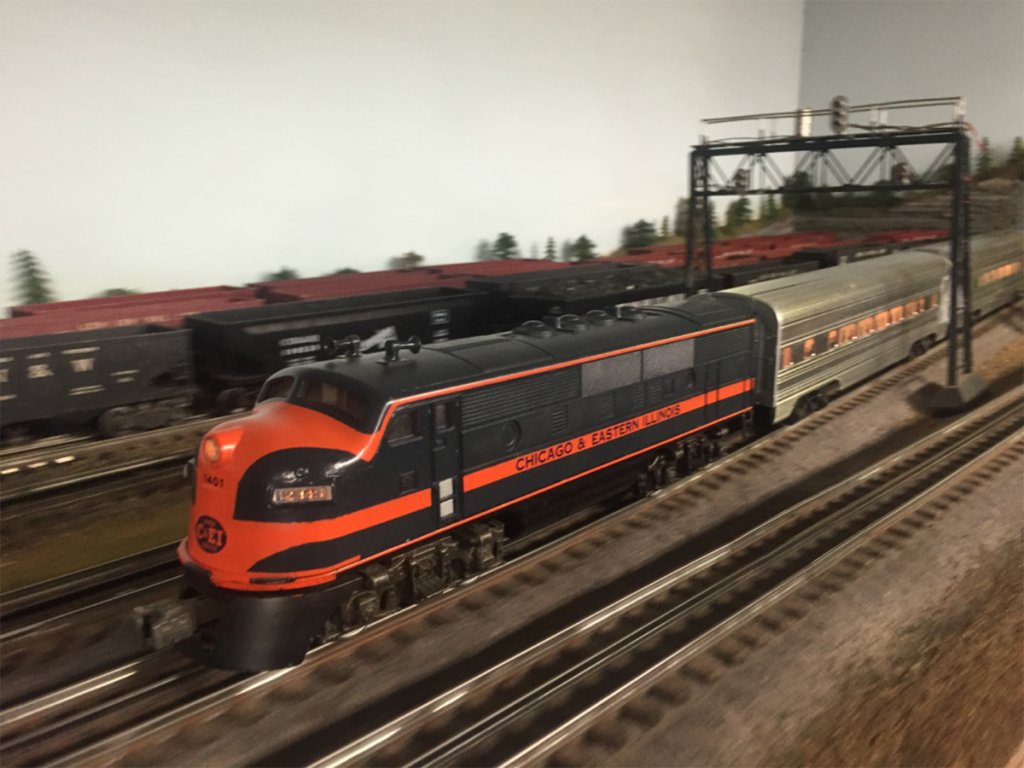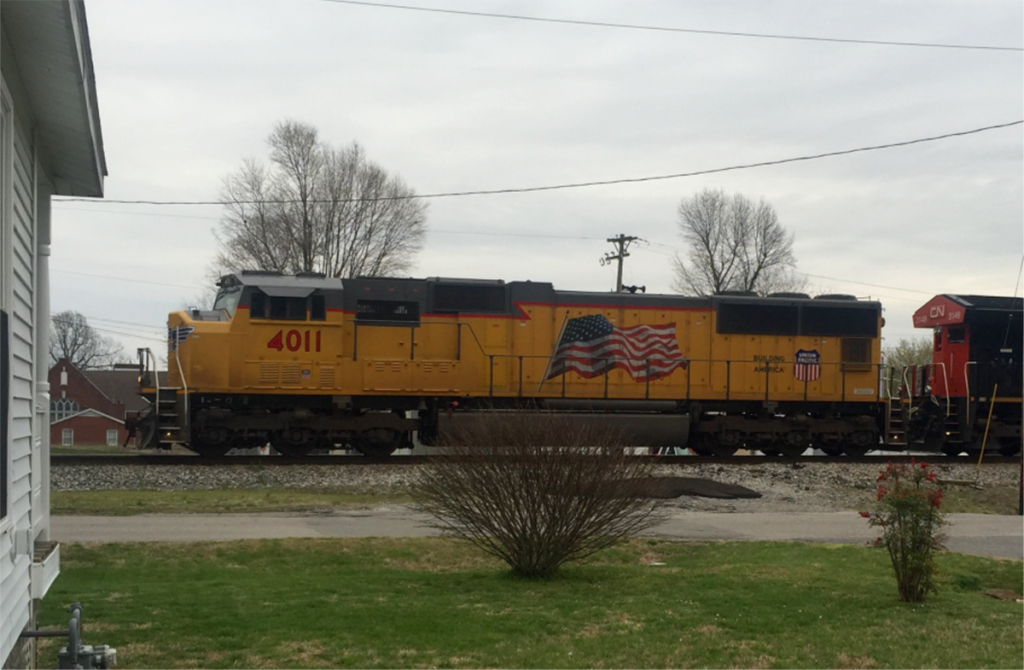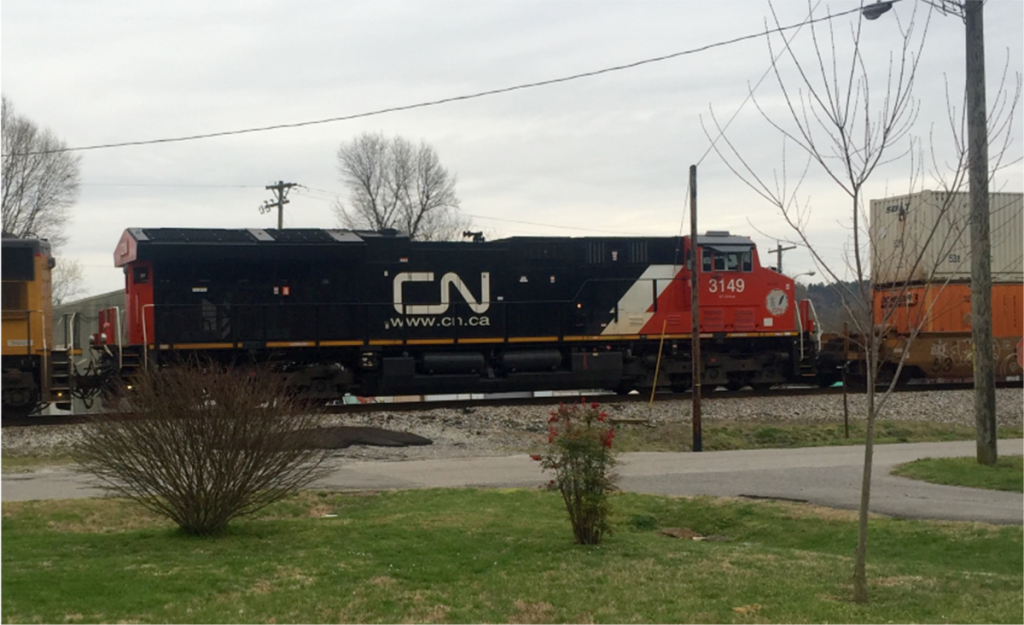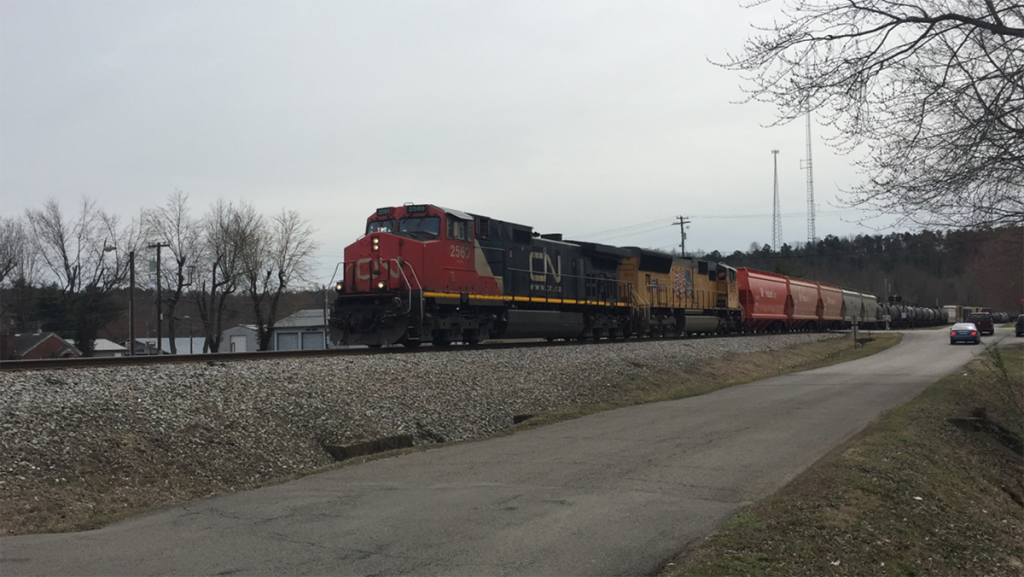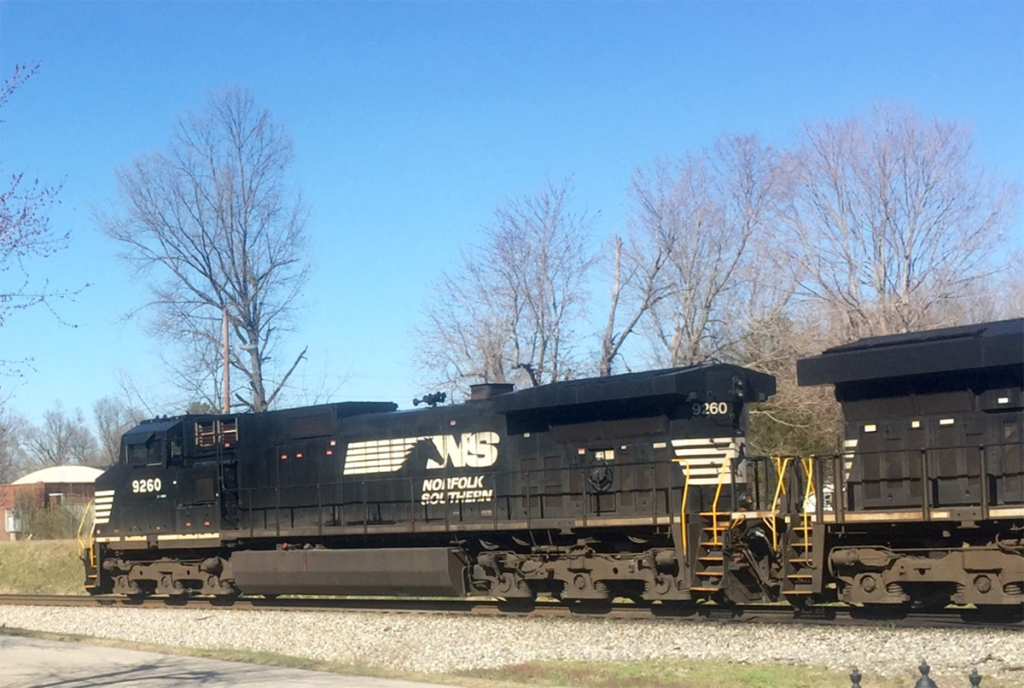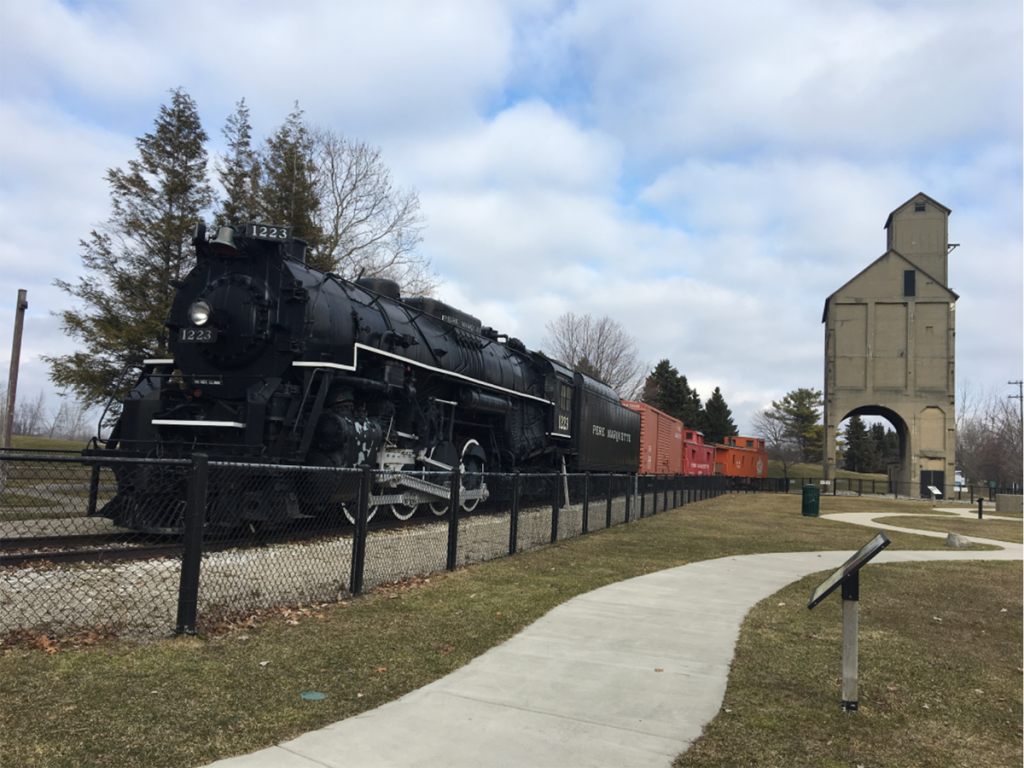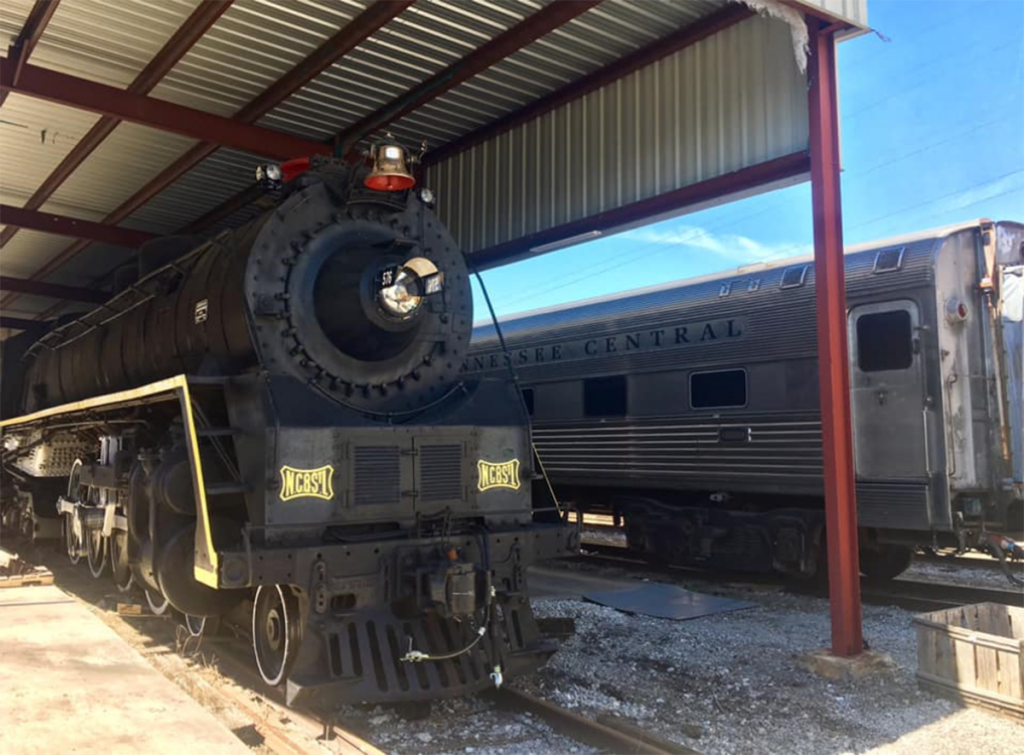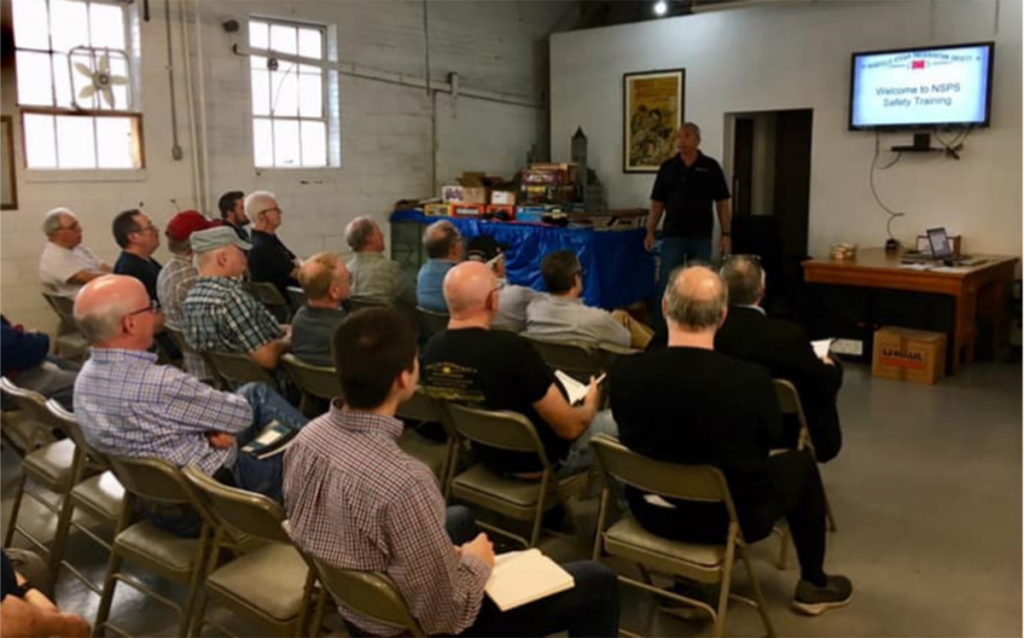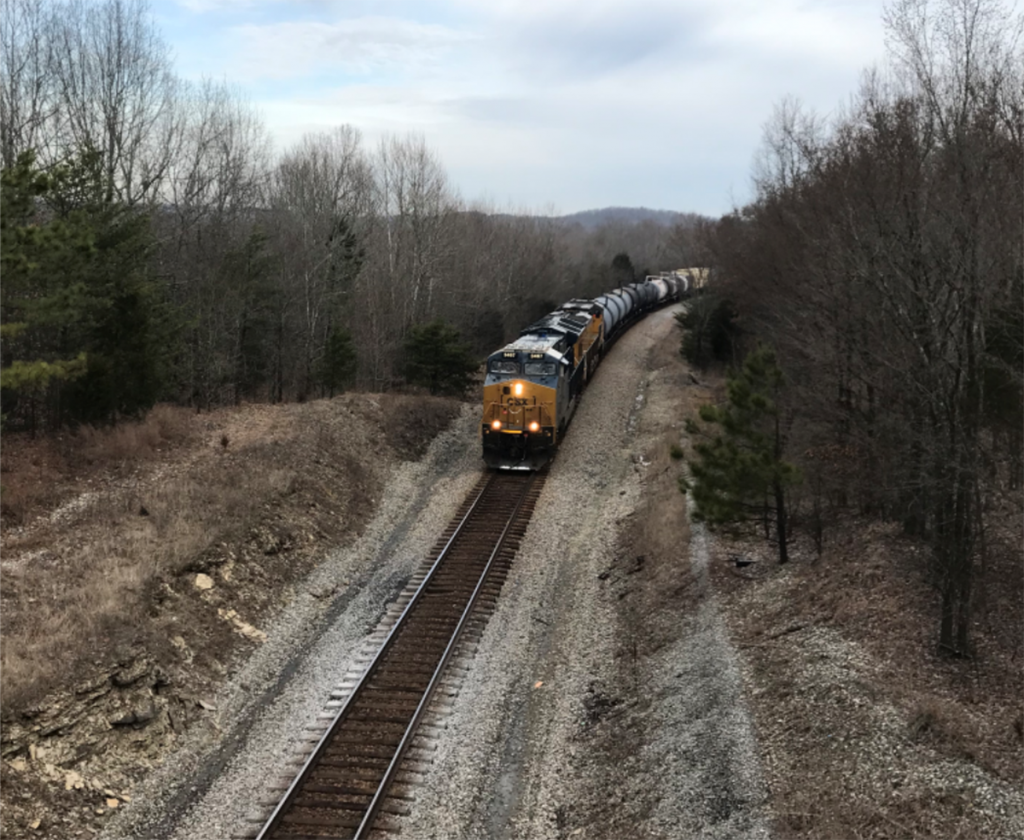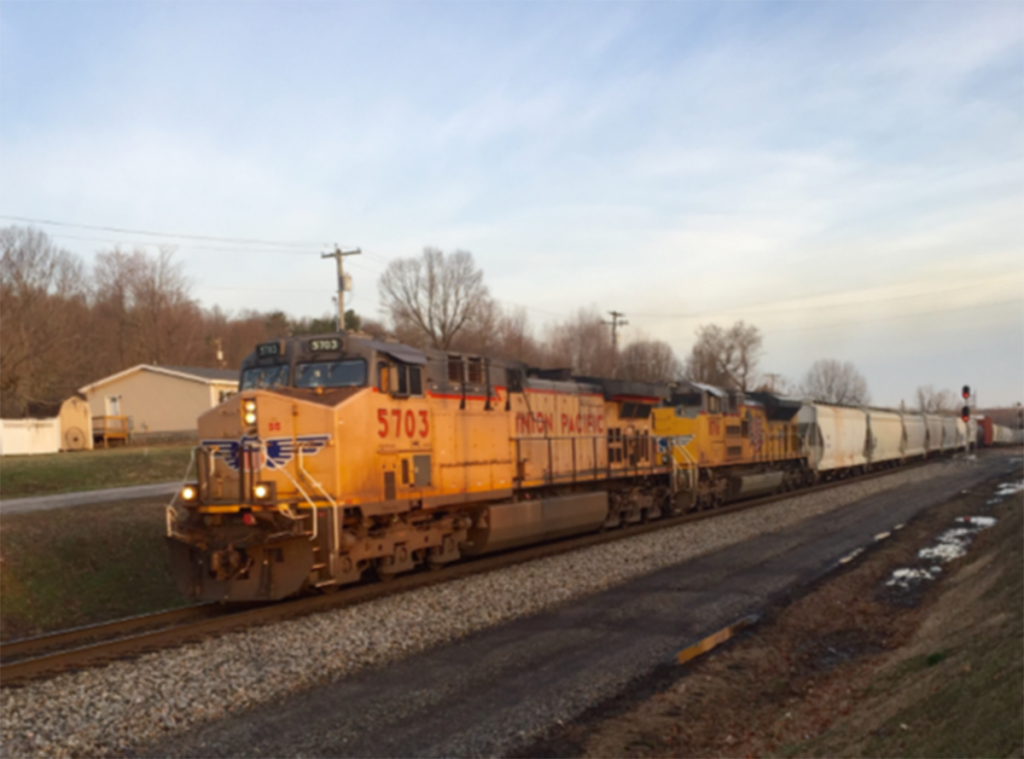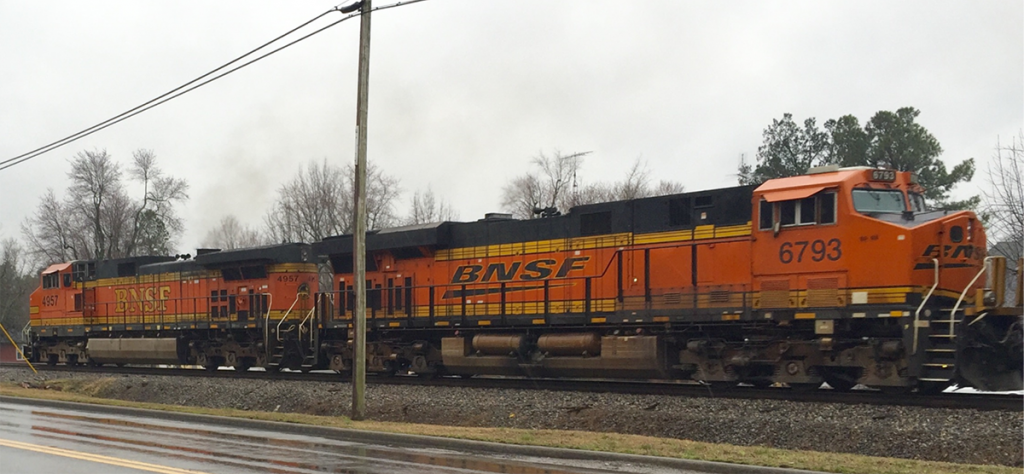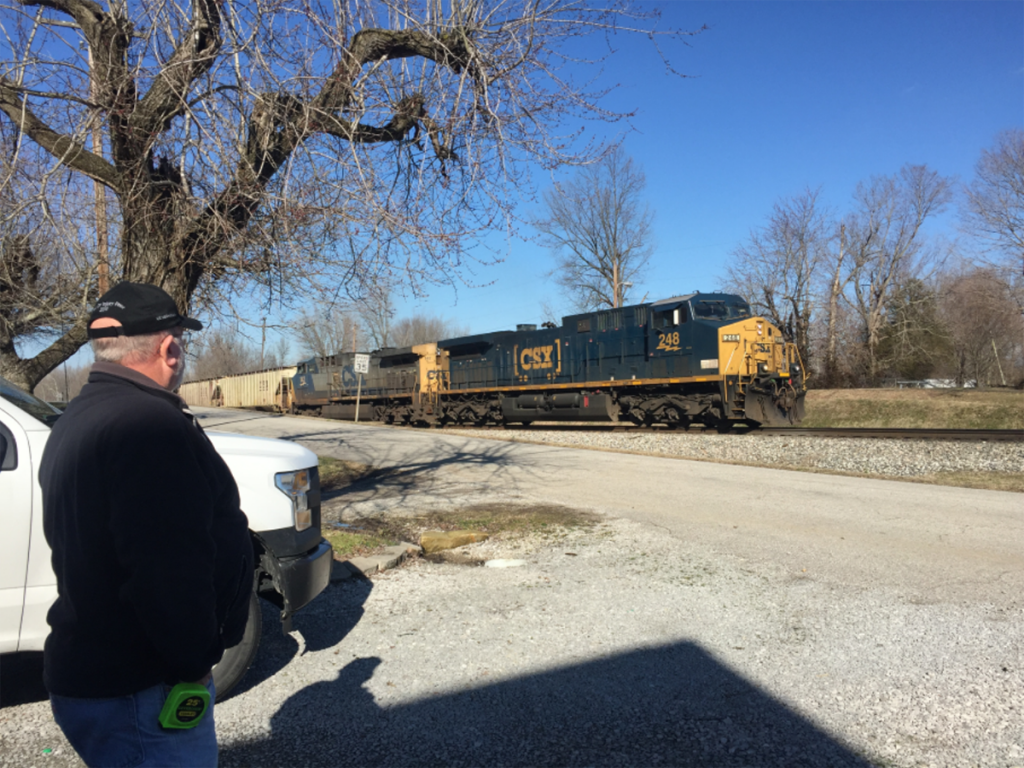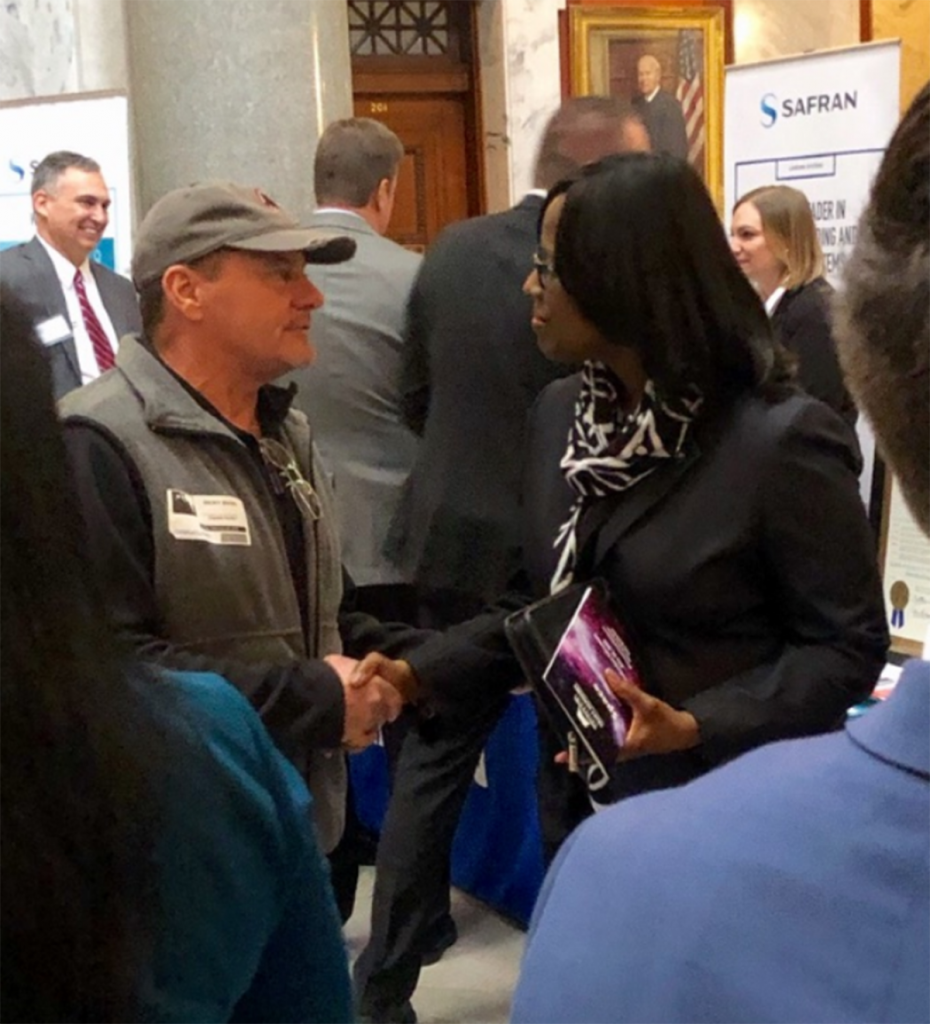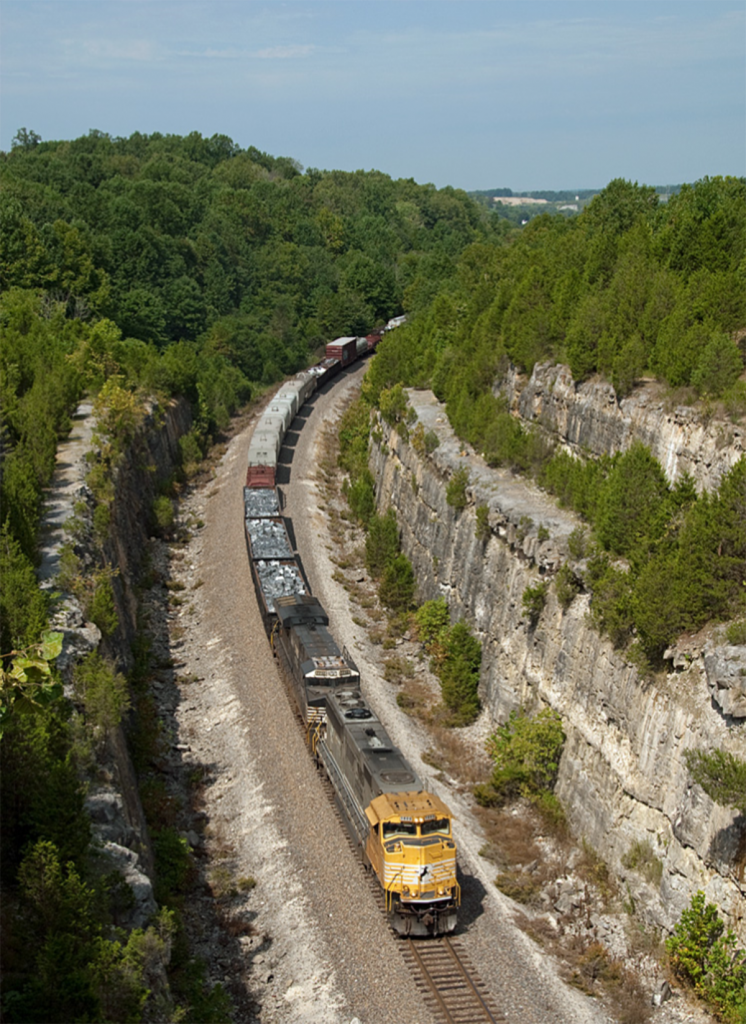
Above – NS #167 eastbound with the “yellow nose” SD70ACC #1800 leads the way towards Louisville just east of Depauw, Indiana on September 1, 2019.
Left – Another scene that can never be replicated. This is Avery, deep in the Bitteroot Mountains of Idaho. You will recall the funny looking (not so) round house hanging over the river.
In its heyday, this is what Avery was all about. Exchanging steam or diesel locomotives for electric power facing a stiff climb up and through St Paul Pass Tunnel. Crews change here too.
In this busy scene the Little Joe in the foreground with it’s quad-headlight still on just uncoupled from the westbound up the track, and is heading for that funny looking roundhouse. The Joe was added at Harlowton, back some 440 miles across three major mountain ranges. From the control position in the Joe, the engineer operates all the power, even setting the diesels at idle on level ground, throttling up as needed. Soon a fresh crew will take the westbound on to points west terminating in Tacoma.
With the mainline cleared, a freshly serviced Little Joe will be placed on the point of the eastbound stopped at the depot. It’s new crew will shepherd the freight up the grade. Then it’s up the substation operator to supply the needed amps to get the job done. Substations like the one in the distance were located about every 30 miles.
This is the way I remember that day in July 1973 when I trekked through Avery with my wife and four kids in our new VW bus. They all remember the great ice-cream cones sold across from the depot.
Photo credit: Ted Benson featured in an Ed Lynch writing in Railfan & Railroad Magazine, October 1990

